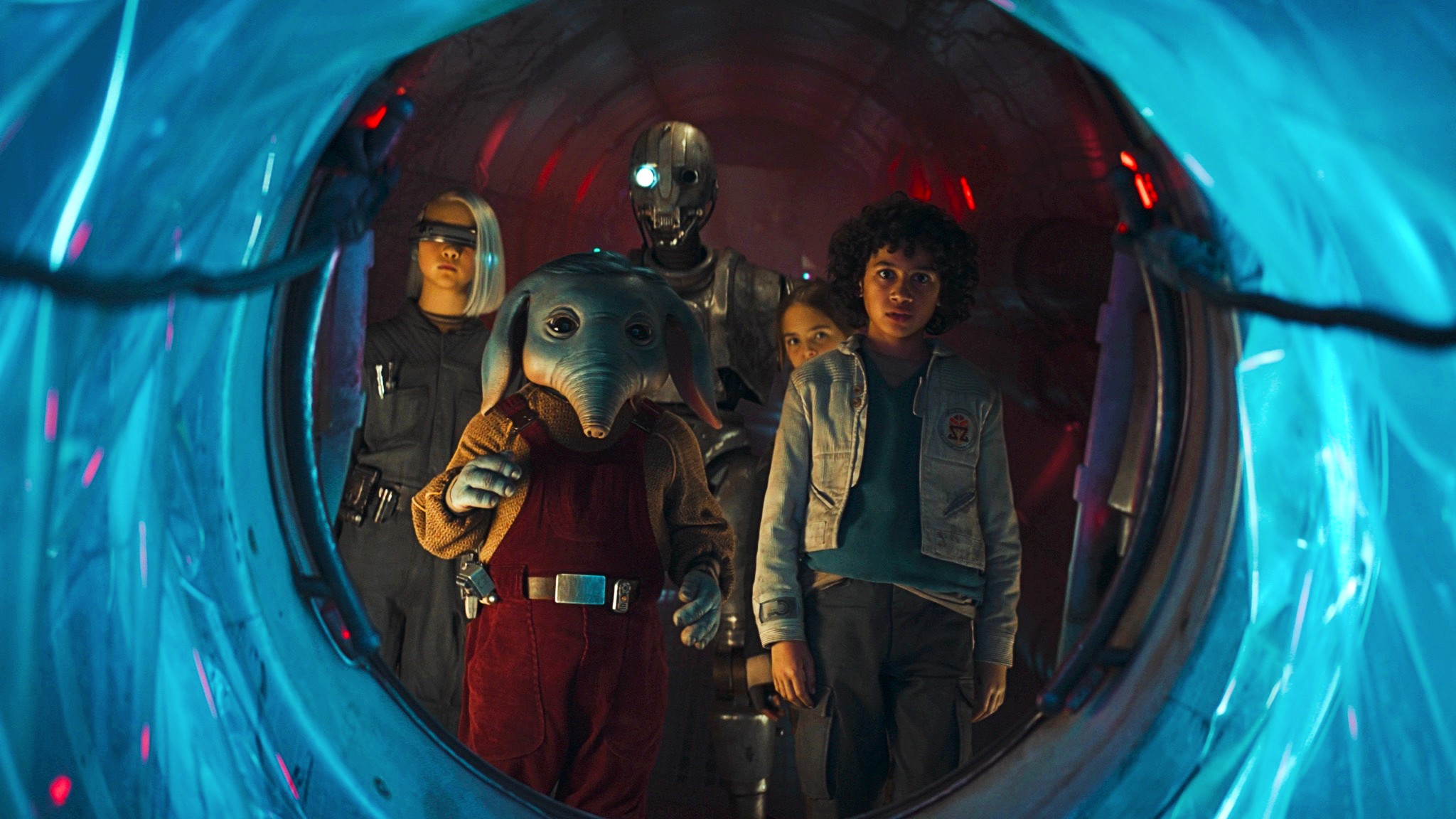
In an age heavily influenced by digital wizardry, the chilling Mama Crab from the series “Star Wars: Skeleton Crew” emerged using a traditional technique. This colossal beast, standing 30 feet tall against the young heroes of the show, was crafted through stop-motion animation at Tippett Studio, upholding the practical effects legacy initiated by the original Star Wars trilogy. The production carries unique importance as it was overseen by Phil Tippett, the renowned animator responsible for the AT-ATs and tauntauns in “The Empire Strikes Back,” symbolizing a return to the practical effects roots of the Star Wars franchise.
As stated on StarWars.com, this character, affectionately referred to as “Tet’niss” by its designers, is known for being the heaviest stop-motion puppet ever built at the studio. The visual effects supervisor Chris “CMo” Morley, along with art director Mark Dubeau, worked closely with production designer Doug Chiang to create a creature that managed to blend an intimidating presence with approachability.

Morley clarifies that the initial idea lacked a defined facial structure, resembling more like a large meatball with legs and various protrusions at its rear. To enhance its appearance, the team added a snapping beak to the design while preserving a touch of the whimsical Muppet-like essence, thus making it less frightening for younger audience members.
The finished puppet is around 15 pounds in weight and boasts about 70 joints for movement. To handle this unparalleled weight, our team designed an innovative harness system, which needed an additional reinforcement.
According to Morley, this is undoubtedly the heaviest stop-motion puppet we’ve ever tackled. In fact, it was so weighty that we had to create harnesses for it.
Keen-eyed viewers may notice several hidden references, or Easter eggs, scattered throughout the creature’s trash-filled shell. Dubeau discloses that tiny replicas of well-known droids such as R2-D2, K-2SO, and C-3PO can be found amidst the clutter, along with pieces of the Millennium Falcon and walkers from the Empire. Nevertheless, Chiang emphasized that these nods to Star Wars should remain understated, so they wouldn’t detract from the overall aesthetic.
Additionally, this being possesses a DNA link with the practical effects seen in the original trilogy. Its radiant eyestalks contain ball bearings colored with a Sharpie marker, similar to the method Tippett employed for the rancor’s eyes in Return of the Jedi. The team also incorporated digital slime effects into the creature’s mouth during roars, heightening its authentic organic texture.
In stop-motion animation, the animator’s intention can sometimes blend with the actions of the puppet, making it seem like the puppet is leading the dance. As the animator, you need to embrace this and work with the puppet’s natural tendencies,” explained Tom “Gibby” Gibbons, a stop-motion animation supervisor.
The masterpiece is now on showcase at Tippett Studio, boasting a scientific name tag that reads “Megapagurus detritiphorus” – in essence, “large garbage-carrying hermit crab.” This name, derived from Latin, symbolically represents the piece as a homage to the skillful art of practical effects and a testament to the continued tradition of practical effects established in the epic saga, “Star Wars.
Skeleton Crew is now streaming on Disney+.
Read More
- Masters Toronto 2025: Everything You Need to Know
- We Loved Both of These Classic Sci-Fi Films (But They’re Pretty Much the Same Movie)
- ‘The budget card to beat right now’ — Radeon RX 9060 XT reviews are in, and it looks like a win for AMD
- Forza Horizon 5 Update Available Now, Includes Several PS5-Specific Fixes
- Street Fighter 6 Game-Key Card on Switch 2 is Considered to be a Digital Copy by Capcom
- Valorant Champions 2025: Paris Set to Host Esports’ Premier Event Across Two Iconic Venues
- Gold Rate Forecast
- The Lowdown on Labubu: What to Know About the Viral Toy
- Karate Kid: Legends Hits Important Global Box Office Milestone, Showing Promise Despite 59% RT Score
- Mario Kart World Sold More Than 780,000 Physical Copies in Japan in First Three Days
2025-01-12 04:39